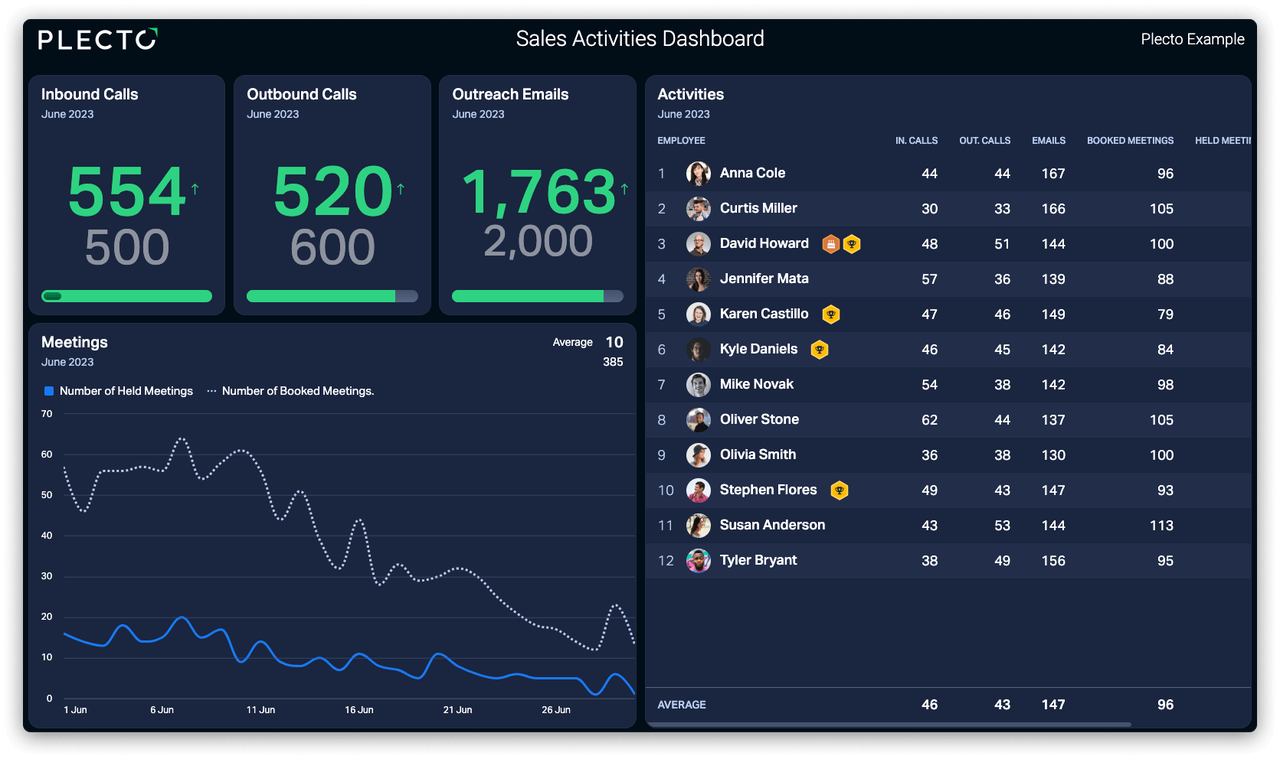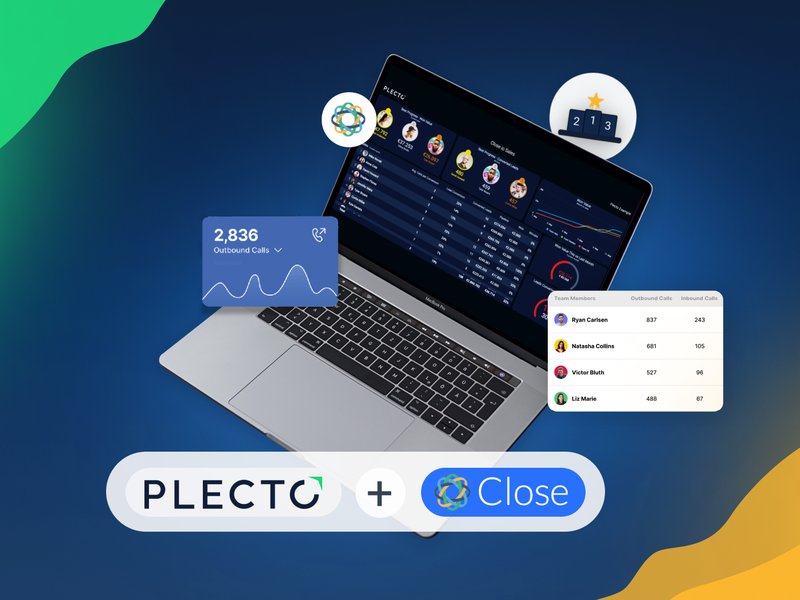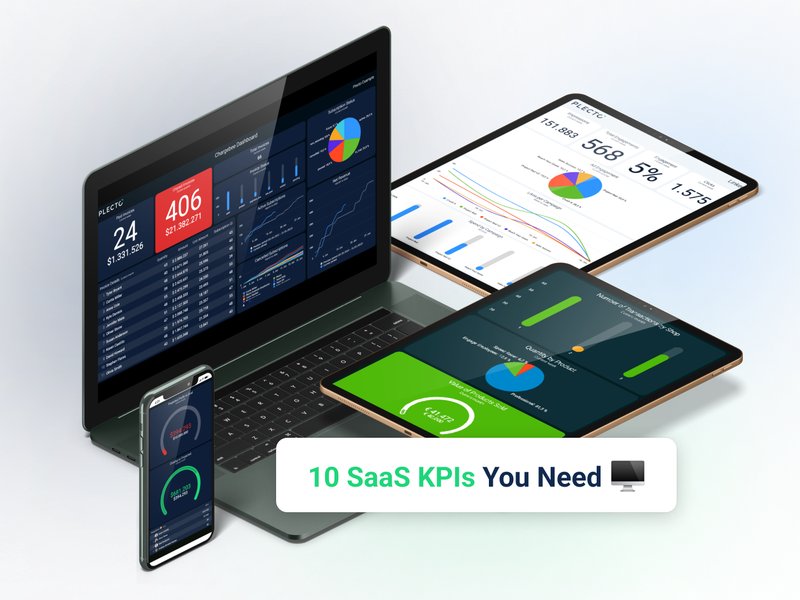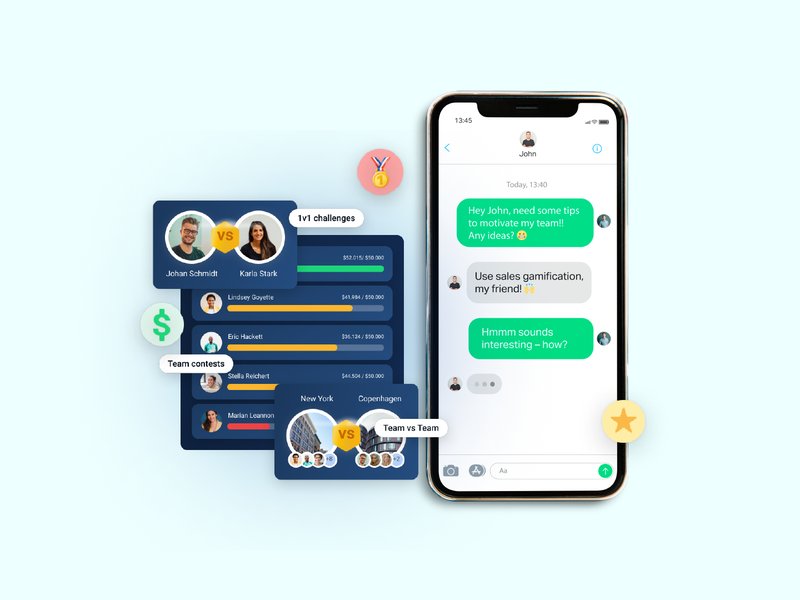While sales are one of the most data-driven aspects of modern business, a surprising number of sales departments aren’t tracking one of the most important metrics – sales velocity. Read on to find out “what is sales velocity?” We’ll tell you how to calculate it, why it’s important, and four ways you can move from great sales to high-velocity sales!
But before we get started, you might want to check out these recommended sales targets for 2023 – and the seven KPIs sales managers should be tracking.
What is sales velocity?
Sales velocity is the best metric for understanding how quickly a company is making money – and for projecting income over a particular timeframe. It’s a tactical sales metric that analyzes how quickly prospects move through the pipeline and begin to generate revenue – in other words, it tells you how long it generally takes someone to complete the journey from prospect to paying customer.
How to Calculate Sales Velocity
Sales velocity can be calculated using this simple formula and data for a specified period:
Number of Opportunities x Average Deal Value x Win Rate ÷ Sales Cycle Length
Let’s take a closer look at each of these components, which should be readily available in your CRM or sales-tracking system:
Number of Opportunities – This is the number of qualified leads currently in your pipeline. To get the most accurate revenue prediction, it’s important to exclude leads that haven’t been properly vetted.
Average Deal Value – Calculate this value by adding up the total sales revenue for a specific timeframe and dividing it by the number of deals closed in the same period (i.e., Total Sales Revenue ÷ Number of Deals Closed). Companies offering multiple products might find it helpful to calculate this number for individual products.
Win Rate – To calculate this number, divide the total number of sales won during a specific timeframe by the total number of opportunities (i.e., qualified leads) in the same period (i.e., Total Number of Sales ÷ Total Number of Opportunities). This calculation highlights the importance of qualifying your leads because while including unqualified leads might boost numbers in the short term, it will ultimately drag this number down.
Sales Cycle Length – This is the average amount of time it takes a qualified lead to move through the pipeline and become a paying customer.
Best practices suggest tracking sales velocity at least quarterly while many experts suggest that tracking it for a period of six months to a year is even better. Tracking over longer periods helps to correct for seasonality or unusually long deals that can skew the results. Also take care to be consistent in your definitions and variables, particularly what constitutes a “qualified lead.” This will help to ensure that your calculation is as accurate as possible.
Build your first dashboard.
Start your 14-day free trial today
Why is it important to track sales velocity?
Companies that track sales velocity are in the best position to understand the customer journey from entering the pipeline to actually converting to a sale. Companies can use this information to identify points in the journey where prospects drop off and stop engaging with their sales reps. Segmenting this information can enable companies to pinpoint where it’s going wrong and help them to identify and address bottlenecks, keep doing what they’re doing right, effectively manage their pipeline, and hit their revenue goals!
4 Tips for High-Velocity Sales
Now that you understand the four main factors driving your company’s sales velocity, let’s take a look at four tips that can move your company toward high-velocity sales that can improve revenue quarter after quarter.
1. Increase the number of qualified leads in your pipeline
The wider your net, the more you’ll catch. Sales velocity is largely a numbers game, so the more qualified leads in your pipeline, the more deals you’re likely to close. Keep in mind that these should be qualified leads. While a pipeline full of unqualified leads might look good on paper, these leads are less likely to convert to sales. The key here is to focus on qualifying your leads, so you can concentrate on the prospects who are most likely to generate revenue. If you’re not qualifying as many leads as you’d like, try looking for leads outside of your usual channels – for example, try a CPC campaign or social media ads.

2. Increase your average deal value
This almost goes without saying – higher-value deals lead to more revenue. But how can you increase your average deal value? This mainly comes down to creating value for your customers. Take time to fully understand each prospect’s needs, then tailor your pitch to not only show how your solution can ease their pain points but why it’s their best choice. The future of sales is in consultative selling where customers see sales reps as partners who are invested in helping them succeed.
Ongoing reality checks can also be helpful – it might make good business sense to focus on bigger companies with corresponding budgets vs. a tunnel vision approach of trying to close any deal, even the small ones. That’s not to say that you shouldn’t close smaller deals – it all adds up – but make sure you’re deliberate in where you’re focusing your energy. And don’t forget upsells! The more you cultivate relationships and ongoing dialog with your customers, the better your position is to understand their needs and suggest complementary products that might help them even more.
3. Optimize your conversation rate
Understanding the customer journey is the cornerstone of high-velocity sales, so it’s crucial to understand why certain deals aren’t closing. Conducting a thorough discovery early on can help you fill in the blanks later on if the deal goes south. Get into the habit of regularly evaluating your sales process to identify where prospects are exiting without buying – perhaps your lead-qualification process could use some work or your pitch strategy isn’t up to scratch. Once you know where it’s going wrong, you can experiment until you discover what works.
It can be advantageous to push to involve the main decision-maker(s) as soon as possible, particularly when dealing with big companies, and to define clear next steps for qualified leads who have shown a strong intent to buy. You might want to scale back your efforts on qualified leads who seem to have too many internal obstacles to overcome before they can buy. Optimizing your conversion rate doesn’t mean that you should be pushy or that you have to give all prospects the same level of attention. Allow them to make a decision on their own terms and timeline while you escort them to the finish line.

4. Shorten your average sales cycle
Some deals take a while to close, and that’s just part of business. Big companies often have more complex needs, more stakeholders, and more complicated internal purchasing processes than smaller companies. Therefore, this isn’t a one-size-fits-all metric. Segmenting your prospects can help you to better predict how long it will take to close the deal.
Quickly responding to all inquiries can speed up decision-making and shorten your sales cycle. Furthermore, one of the main reasons companies lose business to a competitor is because they’re slow to respond – in fact, 30–50% of sales go to the vendor who responds first, so make sure you respond promptly to all prospect inquiries. Consider creating a content library so you’re able to respond almost instantly whenever a prospect reaches out. Centralizing all sales-related content on an intranet or shared drive ensures quick and easy access to a wealth of information whenever it’s needed. In addition, being transparent about pricing from the outset can help avoid sticker shock, and making it easy to sign contracts remotely from a variety of devices can help avoid cold feet while potentially shaving days off of the sales cycle.
Improve sales velocity with Plecto!
Plecto is loaded with features and functionality to help drive high-velocity sales! It integrates with most major sales-tracking software so you always have access to real-time sales performance dashboards and automated reporting. With these integrations and features, Plecto can help you understand things like why some deals closed while others didn’t, where deals are stalling, which communication channels are the most effective, which prospects you should be focusing on, and more.
Plecto also includes built-in performance-driving features like leaderboards, contests, and instant notifications to spark friendly competition and keep your sales team performing their best.
Sign up for a free 14-day trial and see how these tools can help you in your journey toward high velocity sales!




